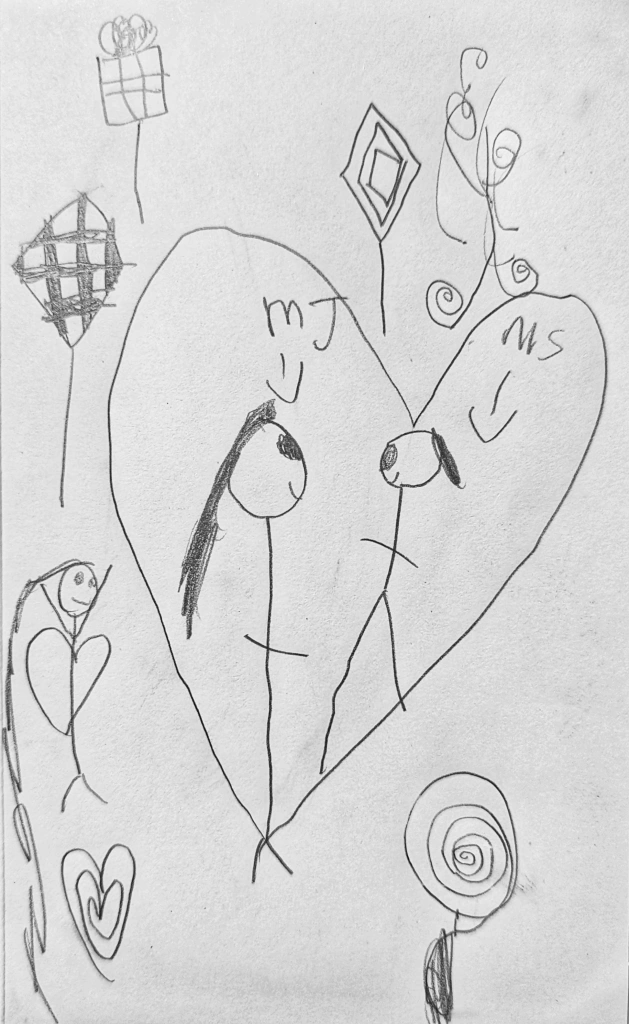Yesterday morning I was listening to Simon Sinek talk with French biochemist Jessie Inchauspé. They didn’t just talk about reducing our glucose spikes. They talked about passion, profound work, and caring a lot. I dug what she said about dietary hacks to help reduce glucose spikes, was amazed by the various benefits, and have already started using her hacks. But, I think the most incredible outcome was the stream of consciousness I had after listening, and then the clarity I found as my brain continued to mull over the ideas as I drove home this evening. Do you ever notice your brain working on things without your conscious help? It’s wild.
I was reminded of the way I end the yoga practice with my Kindergartners. We take each other’s hands (one at a time) make good eye contact and then express gratitude and acknowledgement of each other’s awesomeness. I love those moments with my Kindergartners. I’m not doing yoga as often as I’d like, hence we’re not doing as much thanking and affirming.
After listening to Simon and Jessie I knew I wanted to add it back in, but how? I decided to do it as my dismissal ritual. I tried it yesterday but stumbled on the words as I wasn’t sure what important thing I wanted to affirm. It was good, it was modeling, it was affirmation, but it wasn’t a great sound bite yet.
Then on my way home, my mind was wandering among many things and at some point I thought — Brave and kind! Bravery and kindness are my jam — or at least what I strive and hope for — and they encompass so many other marvelous things about which I am passionate.
Be brave and be kind! If we are brave step boldly in the world We are creative. We apologize when we are wrong. We ask for help when we need it and forge ahead even if we aren’t positive we can do it. We problem find and problem solve. We are curious and imaginative. We lead, and we follow. If we are kind we live and lead as our best selves. We see others, touch hearts, and change the world.
Today I posted this message under our white board, next to our meeting carpet. I say it all the time, now it’s written and there for all to see. At dismissal, I will take each of my Kindergartners hands in mine, look them in the eyes, and very intentionally speak the words I want them to hear after a long day of thinking, doing, learning, and being. “Thank you for being brave and kind. You are fantabulous!”
























